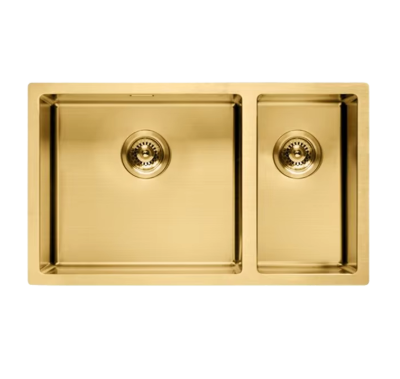Ремесник процес: Як Ручні душі Створюються
Традиційні Техніки проти Сучасної Інновації
Рукаві синтезатори мають багату спадщину ремесла старого світу, але тепер поєднують у собі чимало сучасних елементів. В давні часи кваліфіковані робітники виготовляли ці раковини вручну за допомогою простих інструментів і вікових технологій, які вимагали багато фізичних зусиль і терпіння. Результатом було щось достатньо міцне, щоб витримати, і водночас гарне на вигляд. Проте з роками багато традиційних підходів злилися з новими технологіями, що допомагає підвищити точність і скоротити витрати часу. Сьогодні майстри часто використовують машини разом із ручною працею, щоб зберегти узгодженість у серіях, не втрачаючи того особливого характеру, який робить кожен екземпляр унікальним. Виготовлення такого раковини старим способом зазвичай займає кілька днів, особливо якщо мова йде про складні дизайни. Матеріали також дуже різноманітні — від високоякісної нержавіючої сталі аж до монолітного чавуну. І що ви гадаєте? За словами фахівців галузі, впровадження нових технологій скоротило час виробництва приблизно на половину порівняно з тим, яким він був раніше.
Роль вмілих майстрів у кожній деталі
Майстри є серцем виробництва ручних раковин, вкладаючи свої знання та любов до деталей у кожну створену річ. Після багатьох років навчання ремеслу на практиці, ці митці розвинули гострий погляд на естетику, що означає, що кожна раковина має унікальні візерунки та складні дизайни. Коли хтось уважно розглядає ці продукти, він помічає, наскільки кожна з них відрізняється, зберігаючи при цьому високу якість. Професіонали галузі, які протягом років бачили безліч раковин, часто згадують, що ніхто не може зрівнятися з рівнем майстерності, який ці виробники вносять у свою роботу. Вони створюють фурнітуру, яка виконує практичні функції, але й виглядає чудово. Те, що робить ці ручні раковини особливими, це не лише їхня функція як водяних чаш, а й те, що вони символізують справжнє ремесло у сучасному світі.
Унікальний дизайн та персоналізація в Ручні душі
Кастомні форми та розміри для індивідуальних кухонь
Що робить раковини ручної роботи настільки особливими — це їхня гнучкість у плані дизайну. На відміну від фабричних моделей, які випускаються стандартних форм і розмірів, ці вироби майстерної роботи можна виготовити майже в будь-якій формі, про яку мріє клієнт. Згадуючи свій досвід відвідування кількох майстерень минулого року, можу навести кілька прикладів: одне місце виготовляло круглі раковини, що нагадували великі миски, інші — трикутні форми, які чудово вписувалися в кутові шафи, ще деінде створювали цілком абстрактні форми, які перетворювалися на справжні експонати мистецтва. Індивідуальний підхід виходить за межі зовнішнього вигляду. Коли комусь потрібно додаткове місце на столішниці біля плити або раковина певної висоти для зручного доступу з інвалідного візка, саме такі вироби вирішують реальні проблеми. Власники житла, які обрали цей шлях, після встановлення часто згадують дві речі: кухня стала зручнішою у повсякденному використанні, а гості постійно звертають увагу на те, наскільки гармонійно все виглядає разом.
Підбір покриттів під архітектурні стилі
Ручні раковини мають різноманітні варіанти оздоблення, які дозволяють персоналізувати їх, щоб вони доповнювали різні стилі інтер'єру. Бажаєте чогось сільського шику? Оберіть стиль сільського будинку. Волієте щось сучасне? Існують варіанти з обробкою, як-от коване залізо, відполіровані кам'яні поверхні чи навіть матове керамічне покриття, які гарно виглядатимуть. За даними галузі, приблизно 70 відсотків людей звертають увагу на узгодження стилю раковини з вже наявним дизайном у домашньому інтер'єрі. Це важливо, тому що коли все гармонійно виглядає, будинок стає затишнішим. Дом фахівці з ремонту постійно наголошують, наскільки важливо візуальне узгодження елементів. Тож не дивно, що ручні раковини сьогодні користуються величезним попитом — можна вибрати саме те, що пасуватиме до характеру вашого дому, замість того, щоб обирати безлику продукцію масового виробництва.
Превосходство матеріалів: вибір металів для тривалості
Чому нержавча стал володіє найвищим статусом
Нержавіюча сталь отримує багато уваги, коли мова йде про виробництво раковин вручну, і не дарма. Що робить її такою особливою? По-перше, вона не схильна до іржавіння, практично вічна в експлуатації та має естетичний вигляд. Кухонні покупці часто обирають саме такі раковини, адже вони довго зберігають новий вигляд, навіть після багаторічного щоденного використання, не втрачаючи яскравості кольору та не показуючи ознак зносу. Дослідження вказують, що термін служби нержавіючої сталі довше, ніж у багатьох альтернатив, адже вона чудово витримує високі температури й не темніє з часом. Особливо довіряє цьому матеріалу харчова індустрія, тому що більшість санітарних інспекцій дозволяє використовувати його в ресторанах і кафе завдяки його гігієнічним властивостям. Людям подобається, що такі раковини поєднують міцність і добрий зовнішній вигляд, що пояснює їхню популярність у сучасних кухнях по всій країні. Вони функціональні, безумовно, але й додають того самого класу, на який ніхто не скаржиться.
Стійкість у джерелах та майстерні
Спосіб видобутку та обробки металів має ключове значення під час виготовлення рукотворних раковин. Якщо виробники вибирають більш екологічні підходи, це зменшує загальний вплив на навколишнє середовище. Звертайте увагу на сертифікації, такі як ISO 14001, які встановлюють стандарти екологічного менеджменту, адже вони фактично гарантують, що метали походять з етичних джерел і переробляються без завдання шкоди довкіллю. Усе більше людей цікавляться тим, звідки беруться речі, якими вони користуються, тож обирають продукти за критеріями стійкості та вимагають прозорої інформації щодо використаних матеріалів. Це спостерігається скрізь: покупці навіть готові платити більше за товари, які відповідають їхнім екологічним прагненням. Виробники це помітили і почали впроваджувати екологічні практики в свої виробничі процеси. Цей перехід до стійкості – це не лише розумна бізнес-стратегія, а й допомога у збереженні нашої планети. Саме тому рукотворні раковини продовжують здобувати популярність серед тих, хто хоче здійснити ремонт у домі, залишаючись вірними своїм екологічним цінностям.
Ремесленне проти масового виробництва: порівняння якості
Тривалість ремеслянських спаянь та швів
Рукотворні раковини, як правило, служать набагато довше, ніж вироблені на фабриці, через якість їхніх зварних швів. Коли майстри працюють над такими виробами, вони зосереджені на тому, щоб кожна деталь була правильно виконана, і кожна раковина була унікальною, що означає, що вони краще витримують випробування часом. Деякі дослідження, проведені експертами у цій галузі, показують, що якісні рукотворні раковини можуть залишатися міцними і красивими протягом багатьох років за належного догляду. Це відбувається тому, що досвідчені ремісники приділяють увагу кожній дрібниці та вносять необхідні корективи — чого не може досягти масове виробництво на конвеєрі. Але найбільше вражає вигляд цих рукотворних раковин. Вони не лише функціональні, а й часто мають художній відбиток, що робить їх помітними в кухнях протягом багатьох поколінь.
Екологічний вплив етичного виробництва
Вибір рукотворних раковин замість фабричних значно зменшує шкідливий вплив на навколишнє середовище. Коли майстри виготовляють такі раковини, вони зазвичай більш уважно ставляться до сталого розвитку. Вони, як правило, використовують менше сировини і створюють набагато менше відходів порівняно з великими фабриками, які випускають сотні раковин одночасно. Це підтверджують і цифри — багато промислових підприємств споживають величезні обсяги енергії та виробляють тонни металобрухту, який потрапляє на звалища. Розгляньте, що відбувається у місцях, як-от Цзінде-чжень (Jingdezhen), де традиційні керамічні митці працюють протягом століть — їхній підхід створює значно менший вуглецевий слід із збереженням високих стандартів якості. Усе більше людей сьогодні віддає перевагу товарам, що не шкодять планеті, тож вибір рукотворної раковини є доцільним як з екологічної, так і з етичної точки зору. Артізанські техніки — це не просто старовинні традиції, вони є реальними рішеннями для вирішення наших екологічних проблем.
Збереження спадщини: Піклування про ручкові ванни
Щоденна обслуговування для тривалої яскравості
Ручні раковини виглядають найкраще, якщо за ними правильно доглядати періодично. Дбайливий підхід чудово зберігає ті прекрасні майстерні деталі. Більшість людей вважають, що звичайні побутові засоби чищення добре справляються з завданням, не пошкоджуючи делікатних зварних швів чи спеціальних покриттів. Експерти з місцевих господарських магазинів завжди радять використовувати м’яку суконку з мікрофібри замість жорстких мийних губок, які подряпують поверхні. Регулярне чищення зберігає все свіжим і насправді подовжує термін служби цих раковин більше, ніж очікують більшість людей. Подумайте ось як: витратити п'ять хвилин на день, протираючи раковину, зберегти сотні гривень у майбутньому, коли заміна стає необхідною через знос від нестачі догляду.
Відновлення та захист ручних покриттів
Щоб знову зробити ці ручної роботи мийки такими, щоб виглядали чудово, потрібно трохи спеціальних знань, які зберігатимуть їхню красу, не жертвуєючи функціональністю. Більшість майстрів скаже кожному, хто запитає, що вони покладаються на добре старе натуральне олії або якісні воскові засоби, щоб повернути їм свіжий вигляд і створити захист від повсякденного зносу. Регулярне обслуговування також має значення – люди у справі запевняють, що час від часу наносити герметик заново, щоб тримати вбік стійкі плями та непривабливі подряпини. Якщо ми дотримуємося цих методів, наші ручні мийки залишаються вірними своєму оригінальному шарму, витримуючи роки використання, ще раз доводячи, чому люди люблять інвестувати в справжнє майстерність, а не в масово-вироблені альтернативи.
Розділ запитань та відповідей
Які матеріали найчастіше використовуються для виробництва ручних раковин?
Ремесничі раковини зазвичай виготовляються з високоякісної нержавіючої сталі, луженої чавунної маси, а іноді навіть з кераміки, залежно від бажаного вигляду та тривалості.
Як майстри гарантують унікальність кожної раковини?
Майстри концентруються на складних та персоналізованих дизайнах, використовуючи традиційні технології разом з сучасними інноваціями для створення унікальних раковин.
Яка екологічна користь вибору ручних раковин?
Ручні раковини виготовляються за допомогою стійких практик, використовуючи менше ресурсів і створюючи менше відходів у порівнянні з масовим виробництвом, що зменшує їх вплив на навколишнє середовище.
Як можна підтримувати якість ручної раковини?
Регулярна очистка м'якими чистильними засобами та м'якими шматками, а також профілактичне обслуговування oils або герметиками допомагають зберегти закінчення та цілісність ручних раковин.



